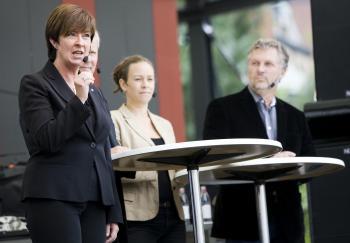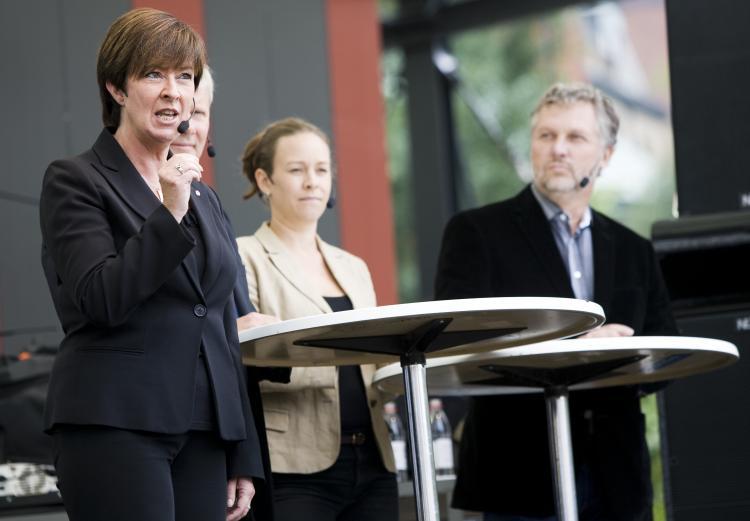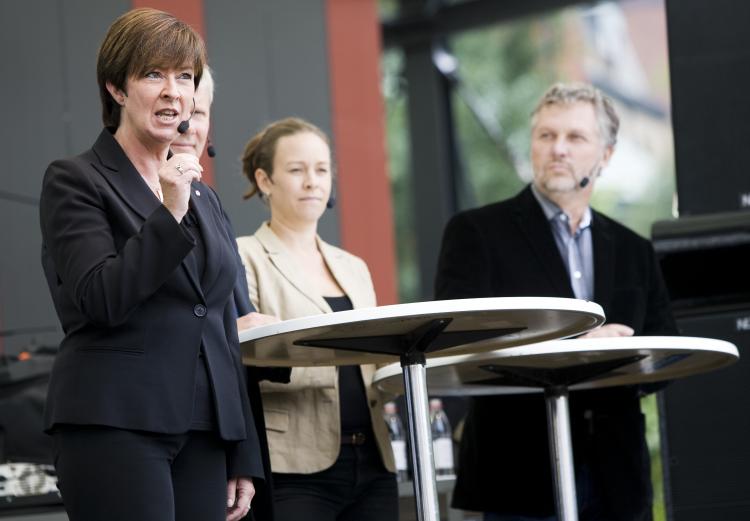Swedish Politics Becoming Similar to US and UK
The upcoming election for the Swedish parliament is, for the first time ever, a struggle between two coalitions.

WAR OF WORDS: Speaking at a Stockholm rally on Sept. 12, the leaders of the the Social Democrats led by Mona Sahlin (L), the Left Party led by Lars Ohly (2nd L, behind Sahlin) and the Green Party represented by Maria Wetterstrand (2nd R) and Peter Eriksson (R), try to win undecided voters for their coalition in Sweden's Sept. 19 elections. Jonathan Nackstrand/Getty Images
|Updated:



